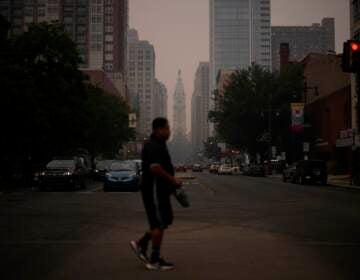Scientists have their eyes on Chagas disease and the 'kissing bugs' that help spread it
Chagas disease can lead to heart failure and damage to the esophagus and gastrointestinal tract. Roughly 20-30% of those who contract Chagas may be at risk of dying from it.
Listen 9:55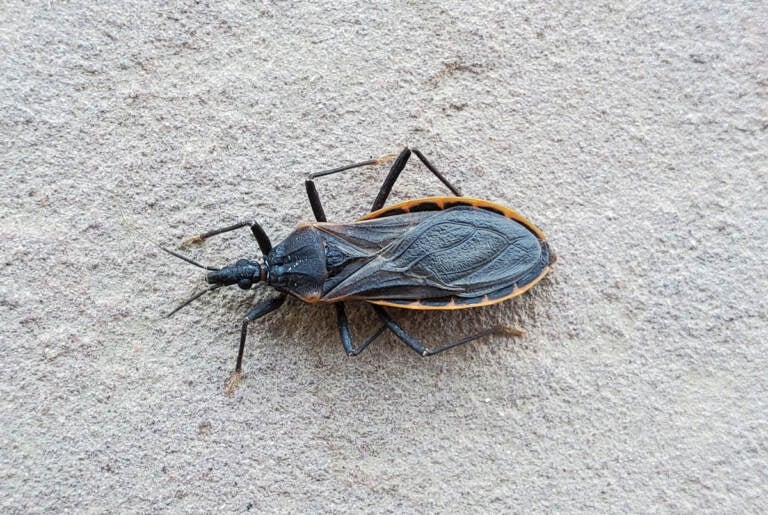
Kissing bug sample that is one of 130 different species of insects. (Courtesy of Emily Pollom)
This story is from The Pulse, a weekly health and science podcast.
Find it on Apple Podcasts, Spotify, or wherever you get your podcasts.
Emily Pollom is a biologist, fascinated by living things, and it shows as she gives me a tour around her property in rural southwestern New Mexico. She points out the little details about the local flora and fauna, lost on most of us, before she starts to clean up a midden, a nest, built by woodrats.
“These are the pallets, they love pallets. Absolutely love them,” Pollom said.
These rodents — about the size of a city rat — live all over the Southwest. Their handiwork, the middens, are piles of debris you might find under your car hood (yes, they can get in there) or in your backyard. Or, in Pollom’s case, under wooden pallets near her front door.
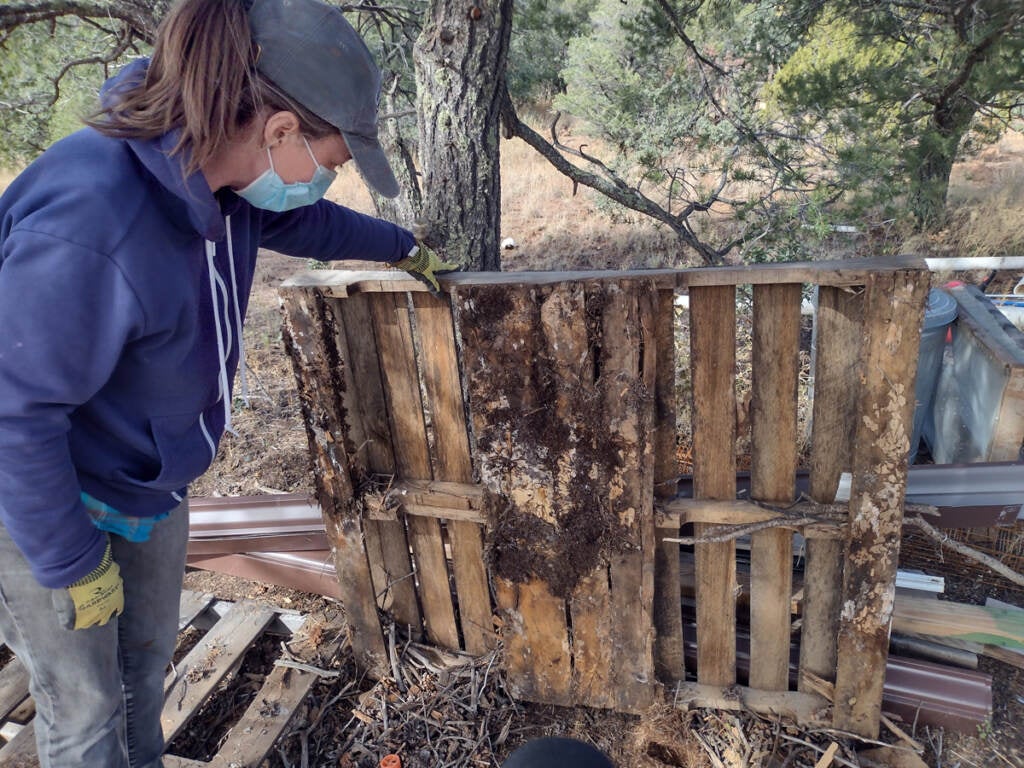
But Pollom isn’t really concerned about the messy nest: What she’s worried about is kissing bugs. They ravenously feed off these packrats and reproduce ever more offspring shortly afterwards.
Kissing, conenose, or vampire bugs — triatomines to be scientific — are a group of 130 different species of insects. If you live in the Southwest or the South, you’re probably familiar with them. They look like beetles with long snouts, and they’re bloodsuckers. But unlike mosquitos or ticks or even biting flies — you usually don’t even know if you’ve been bitten by them unless you’re allergic to their saliva. Their bite itself is painless.
The problem with these kissing bugs is that they can carry a parasite known as Trypanosoma cruzi — T. cruzi for short — which can cause Chagas disease.
“That parasite is very, very tricky. [The] parasite is very complex, in its life stage, in its transmission from the triatomine,” said Rosa Maldonado, professor of microbiology at the University of Texas at El Paso.
“You can live with this disease — think 20, 30 years — before you know that you are sick,” Maldonado said about Chagas.
Those who are infected with T. cruzi and then develop Chagas can eventually suffer from heart failure and damage to their esophagus and gastrointestinal tract. Roughly 20-30% of those who contract Chagas may even be at risk of dying from it.
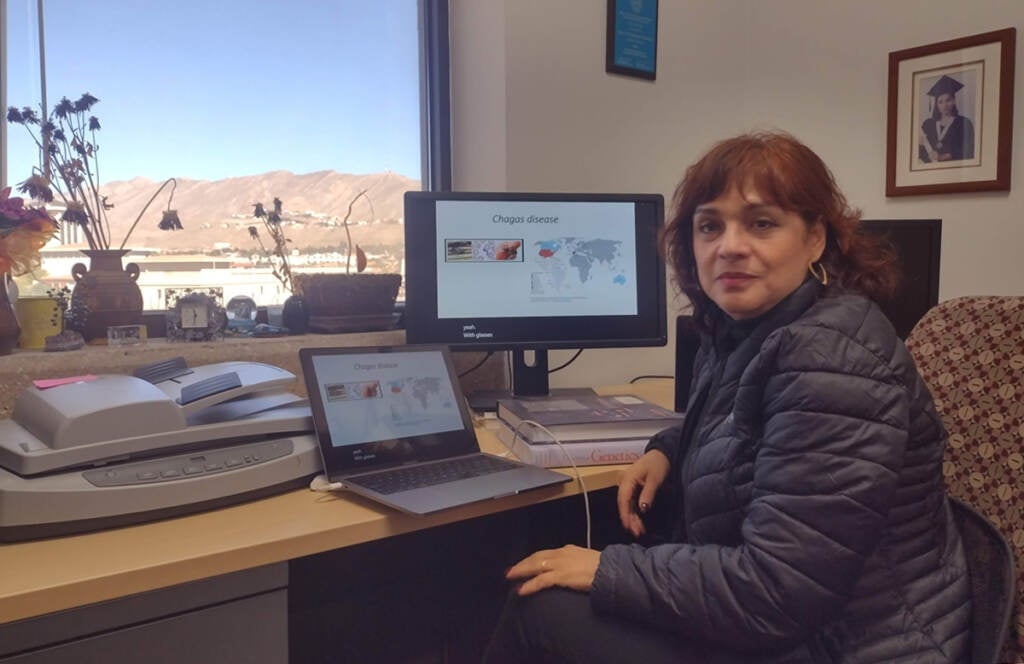
A few years ago, the World Health Organization estimated that between 8-10 million people worldwide suffer from Chagas, mostly in Latin America, particularly in Bolivia and elsewhere in South America.
Here in the U.S., estimates have the numbers as high as 300,000 people being infected with the T. cruzi parasite, although most experts believe that the majority of these cases were contracted abroad — outside of the U.S. That said, all these human infections came from blood-sucking kissing bugs.
As vector-borne diseases go, however, it doesn’t at first glance seem like the most efficient mode of transmission.
“Kissing bug is not a very efficient vector of Chagas disease. [Kissing bugs] have to feed on you, they have to defecate,” said Jane Pierce, an entomologist at New Mexico State University. She points out that the parasite passes through the insect’s fecal matter — its poop — before entering its human host via a bite. In Latin America, food and drink contaminated with the bugs’ feces are themselves major modes of transmission.
“It’s really a lousy vector … it really is,” she said.
The estimated number of locally acquired Chagas cases in people in the U.S. is low— likely 10,000 or less — although all such estimates are rough. But the disease is passing on to other warm-blooded creatures here, as Pierce points out.
“Dogs are at very high risk,” she said.
Subscribe to The Pulse
Recent studies of dogs in Texas are very sobering. In big kennels up to half of the dogs have been found to carry the parasite. This doesn’t mean that all of these dogs have Chagas disease, but many do, and scientists are increasingly documenting cases where dogs die from the disease.
Rosa Maldonado has been monitoring the prevalence of T. cruzi in kissing bugs and other animals at her lab at the University of Texas at El Paso. She and her team have collected kissing bugs and samples from wild animals, including feral dogs, at several sites in Texas and New Mexico. They’ve found that both showed high rates of T. cruzi infection.
They also identified blood samples from those T. cruzi-positive bugs and found that indeed packrats, dogs, and, yes, humans had been fed upon at some point in their life cycle.
Epidemiologists emphasize that it’s not that Chagas disease is the next major epidemic in the U.S. — certainly not on the order of COVID-19. But researchers also don’t really know the magnitude of the threat. There’s very little understanding of just how many people who have immigrated from parts of Latin America, where Chagas is prevalent, are living with the disease and just aren’t being screened.
“I feel like oftentimes the people that are mostly exposed or mostly affected are coming from places where they don’t have access to medical care,” said Paula Granados-Stigler, associate professor of environmental health at San Diego State University and longtime Chagas researcher.
“I think that there’s going to be a lot of missed diagnoses — it’s a very underdiagnosed disease here in the United States. And the disease is a bit complicated in that you can be infected with the disease or the parasite, have no symptoms and live your entire life completely symptom free,” she adds.
The disease is indeed complicated. Not everyone who carries the parasite contracts Chagas disease. And not everyone who has Chagas will have the most troubling symptoms like heart failure. Yet 60-70% of people may be living with it in an indeterminate phase where they don’t develop severe symptoms right away. It could take 20-25 years for this to happen. After this latent period, severe damage has been done to the patient’s body. This can include the need for a heart transplant or having to live with a severely damaged colon. And, of course, the possibility of death.
This is the reason public health practitioners and doctors emphasize monitoring and screening.
“Do we have the resources to screen everybody? No. Is it so prevalent that we should be screening everybody? No. But definitely targeting places where we think there’s a higher risk? Yes,” Granados-Stigler said.
All of this speaks to the social determinants of health. That your race, ethnicity, class, gender identity, or immigration status may determine the type of health outcomes you receive. Because the burden of disease is overwhelmingly felt by Latino and low-income populations, many public health experts aren’t so concerned about massive new transmission in the U.S.; rather, they often seem as much concerned about the people who could already have the disease. This includes mothers who may pass T. cruzi on to their children congenitally.
And it’s not only that monitoring and testing for Chagas are rudimentary compared to much better-known diseases in the U.S., it’s also that the drugs used to treat acute Chagas come with serious side effects. Some U.S. states, like my native New Mexico, don’t even list Chagas as a reportable disease. And all of this often assumes a patient has access to the health care system — a bit of a stretch for many living in poverty or afraid of entering it as immigrants who are undocumented.
“We have a policy of containment,” said Daisy Hernández, an English professor and author of the book “The Kissing Bug,” which is equal parts personal memoir and journalism on how underserved populations fall through the cracks when they have a disease like Chagas.
“And once a disease is contained to a marginalized or vulnerable group, we are pretty satisfied as a whole. No one says that publicly,” Hernández said.
We may never know for sure how big a threat Chagas is for hundreds of thousands of people in the U.S. — even if we very well do know how big it is in Latin America. But kissing bugs that crawl among us here are vectors for the parasite, as animals like dogs and packrats make very clear.
We also know that kissing bug bites can cause serious allergic reactions, up to anaphylaxis, which alone is a reason to control their infestations around our homes.
Emily Pollom, the biologist who is always scanning her property in rural New Mexico for kissing bugs, knows this all too well. Her partner, John Gorey, also a biologist, is a perfect example. He had a particularly nasty encounter with kissing bugs a few years ago.
“I didn’t know what was going to happen with me after the bite because I was feeling really hot. I was starting to actually get hives and my entire body started to itch and I didn’t have any breathing difficulties, but it seemed like that was the next step,” Gorey recalls.
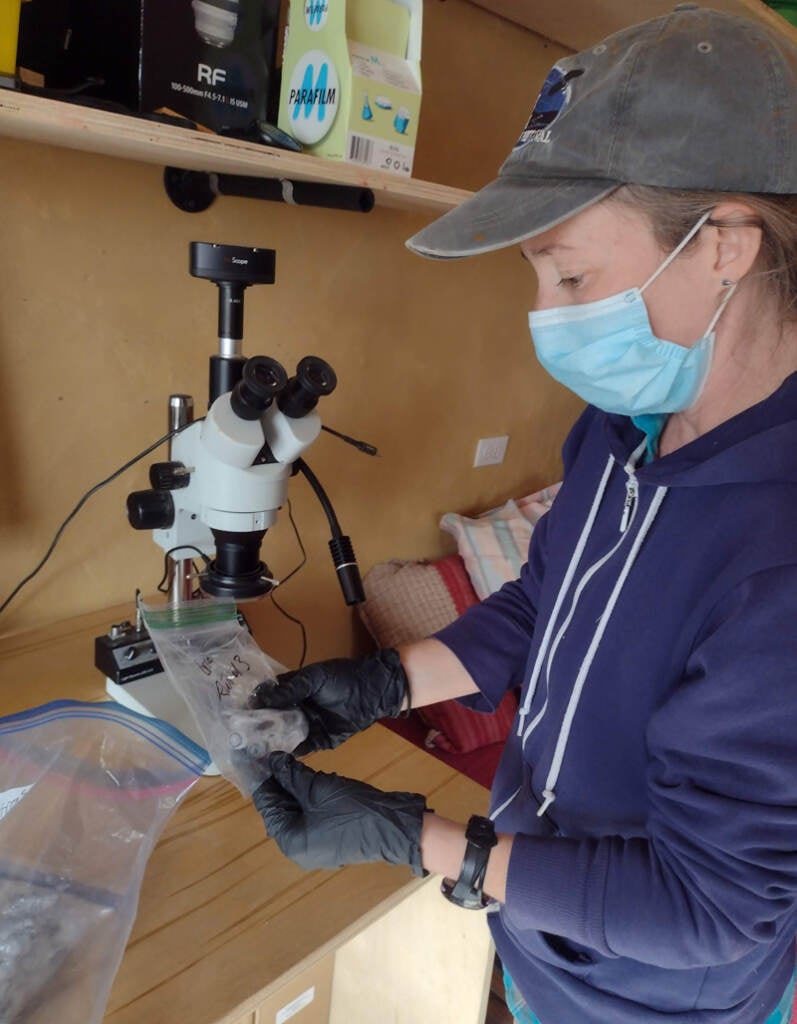
As a result, Pollom and Gorey have been working to increase awareness of kissing bugs and the potential threat they pose, while always keeping things in perspective.
“The way I feel about the risk of Chagas, I guess, in my own life with the kissing bugs that are around my own home is that it’s important for me to be aware and develop measures for being cautious. But I don’t feel afraid all of the time. [The] fear that we have is much more having to do with the allergy than from the the risk of Chagas,” Pollom said.
In this way, a whole host of hardworking scientists, doctors, activists, and even writers are doing the same about the larger threat of Chagas. It could well be through their efforts that many will have less fear of a painless nibble in the middle of the night.
WHYY is your source for fact-based, in-depth journalism and information. As a nonprofit organization, we rely on financial support from readers like you. Please give today.




